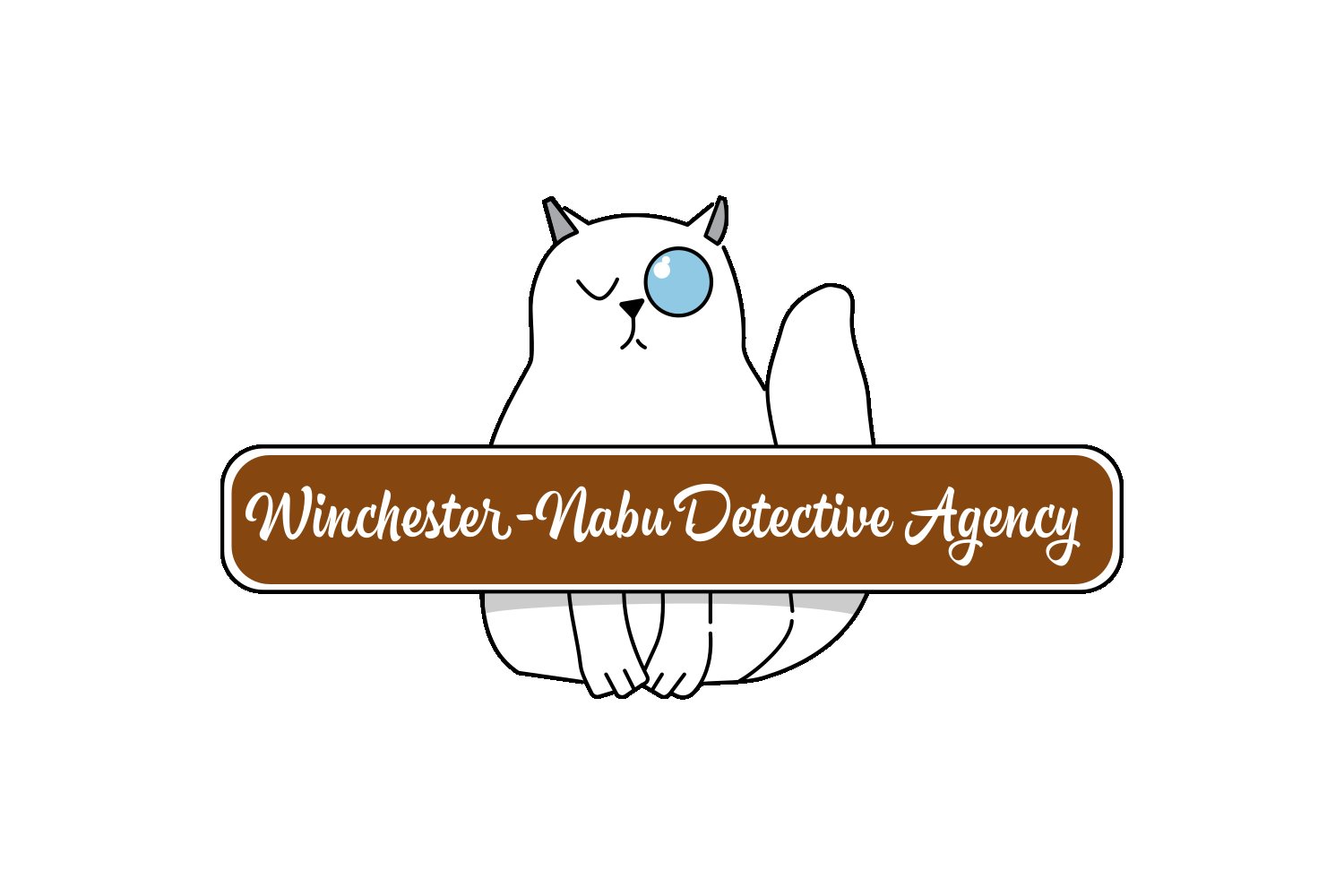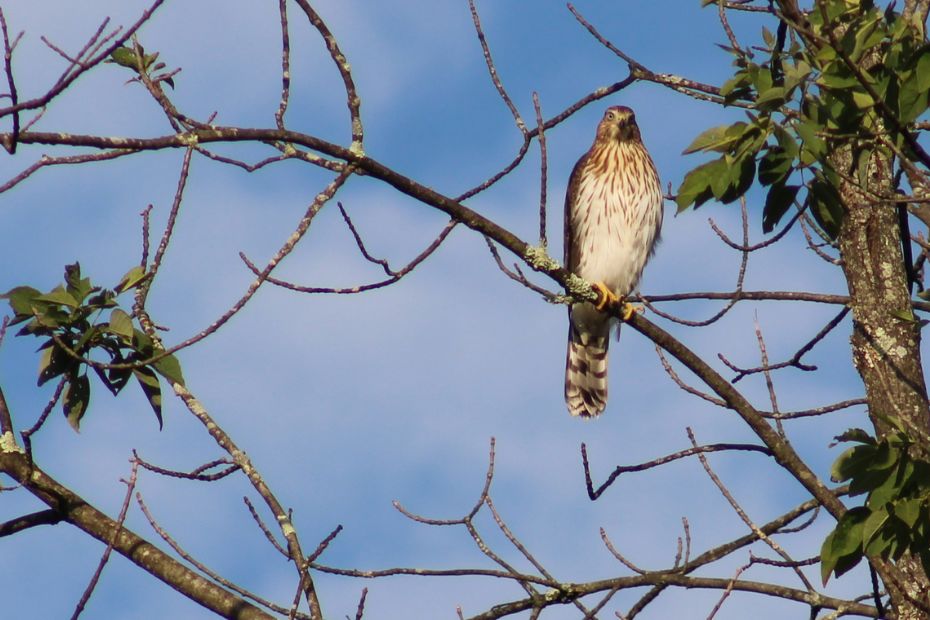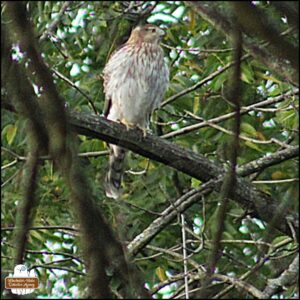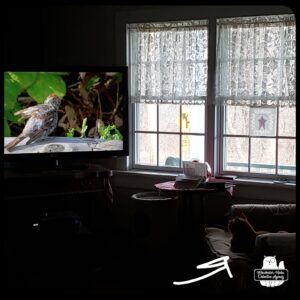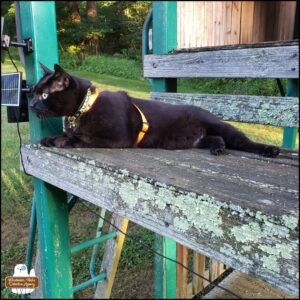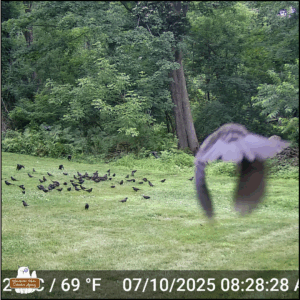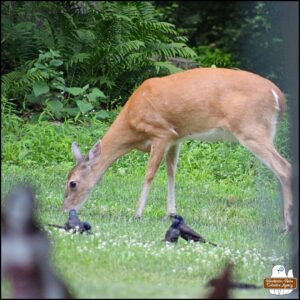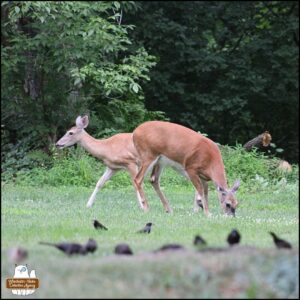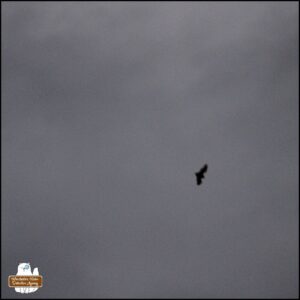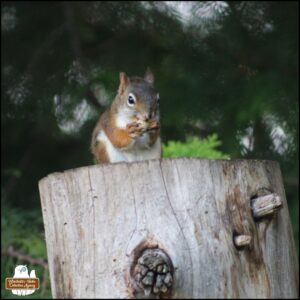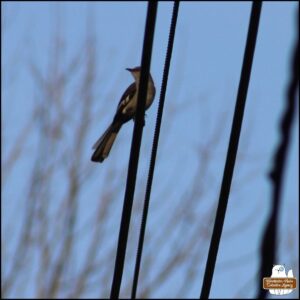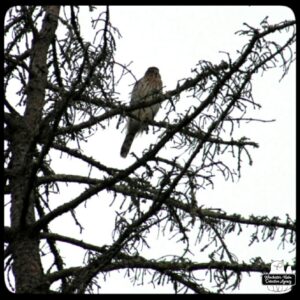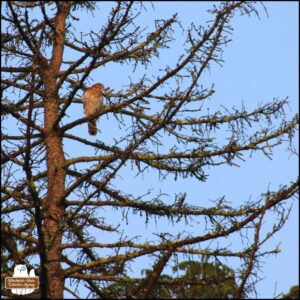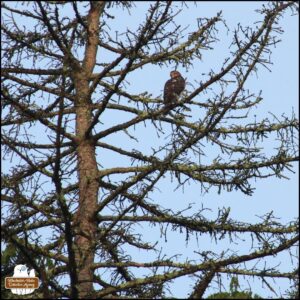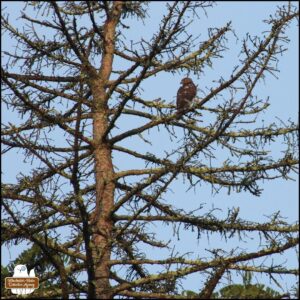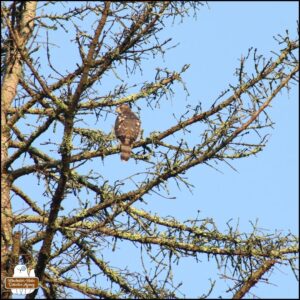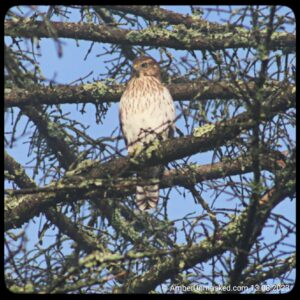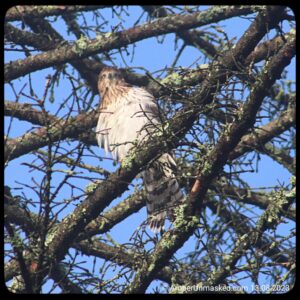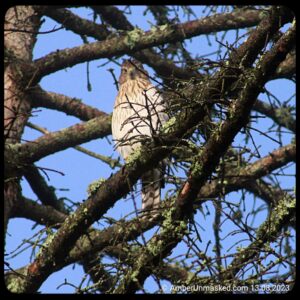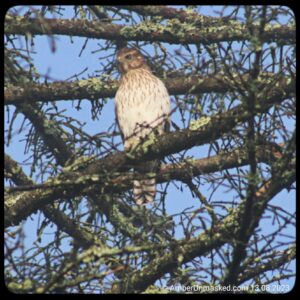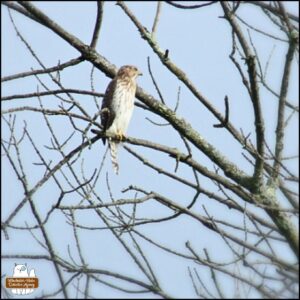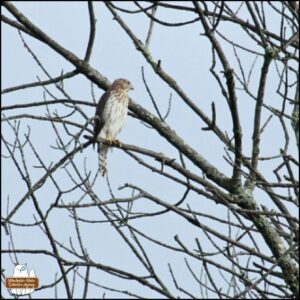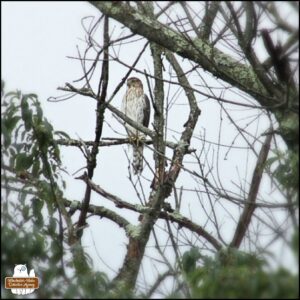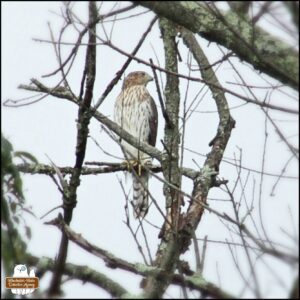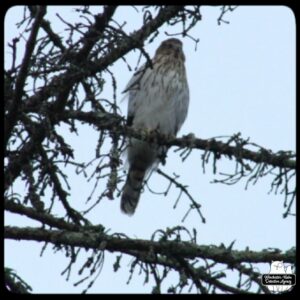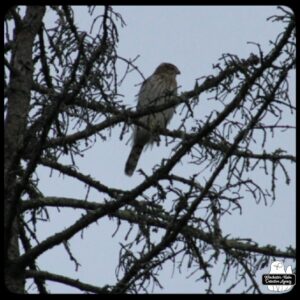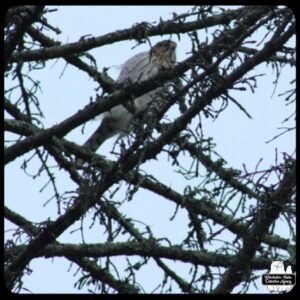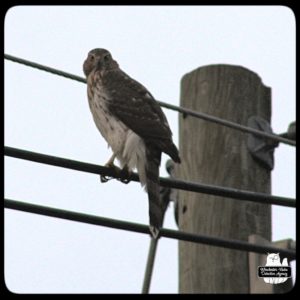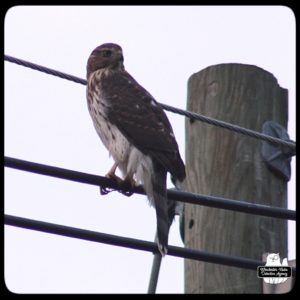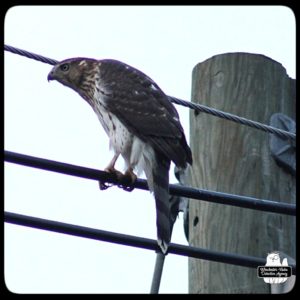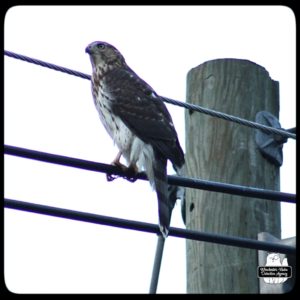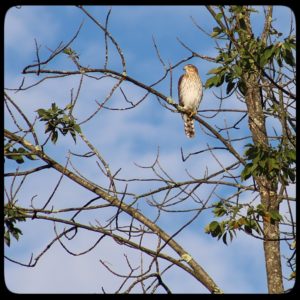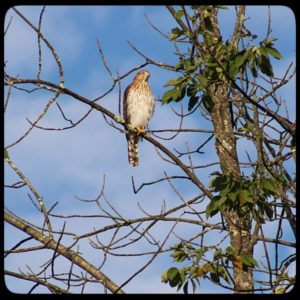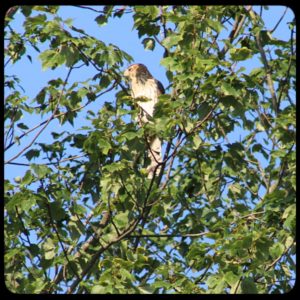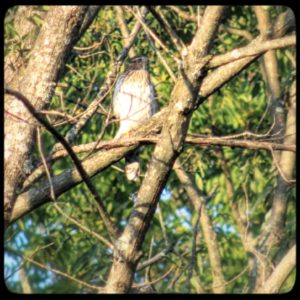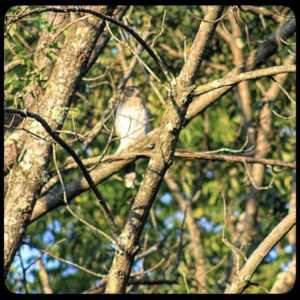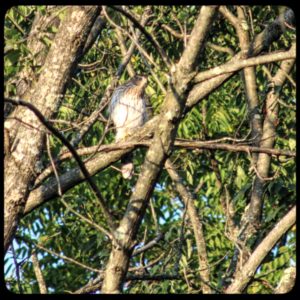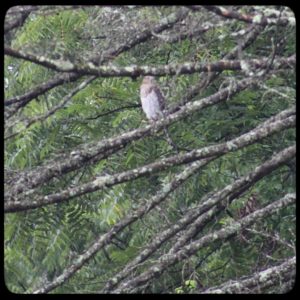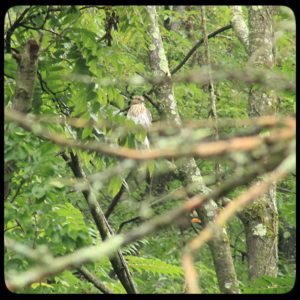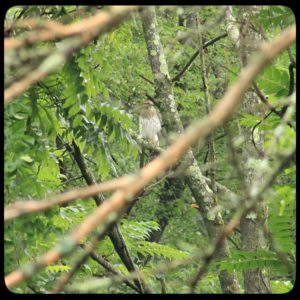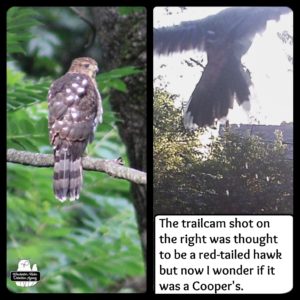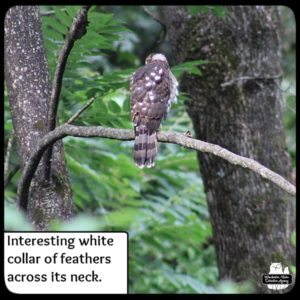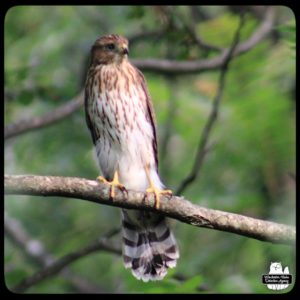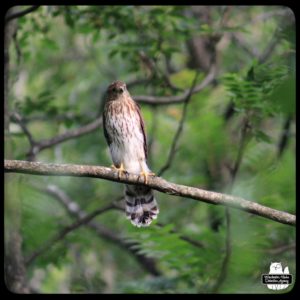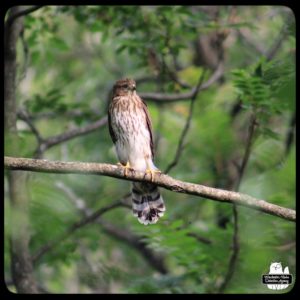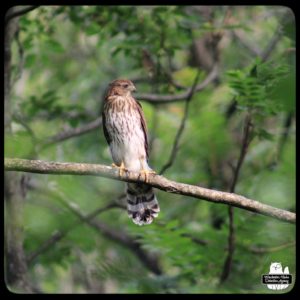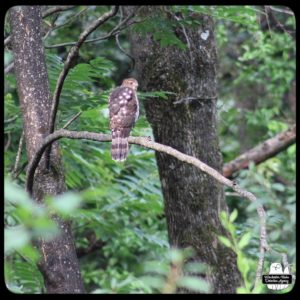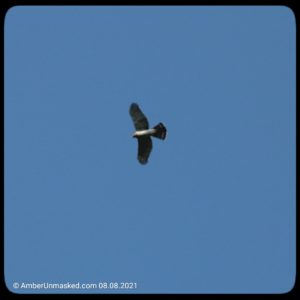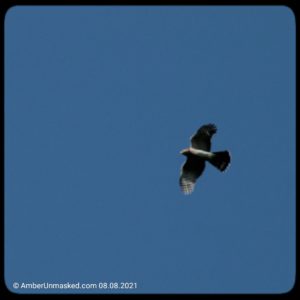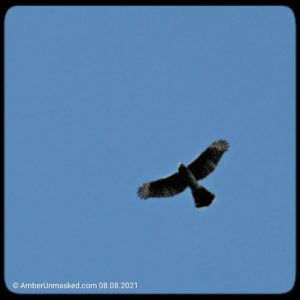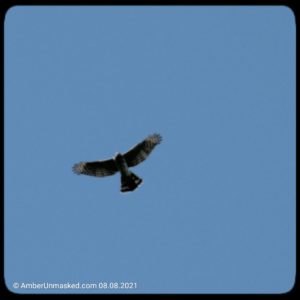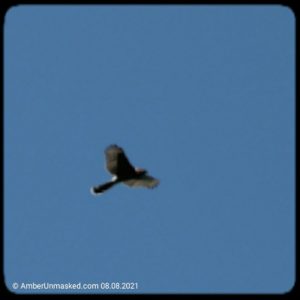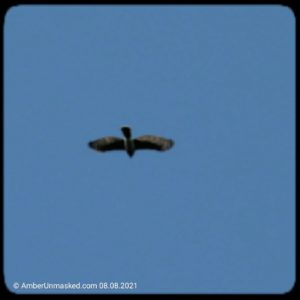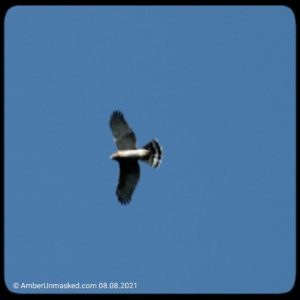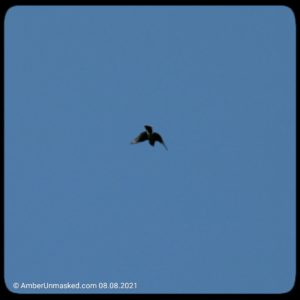This work is supported by the generous backers who adore my cat stories at Patreon.com/amberunmasked and they also get first access to what’s happening with my books and projects.
Where We Left Off:
Oliver and Gus had a rare opportunity to capture and release a bat who had made its way down the chimney and right into the house.
City Streets:
This news hit the media back in May of this year. It’s not everyday that New Jersey and its glorious wildlife are featured in national news. Oliver and Gus loved what I read to them when we came inside from our morning adventures. We’ve observed some interesting, but known, behavior about local hawks being attacked by crows and even birds as small as Baltimore Orioles.
Researcher Vladimir Dinets published the paper, “Street smarts: a remarkable adaptation in a city-wintering raptor” on May 22, 2025 in Frontiers in Ethology.
Dinet discovered the following about a young Cooper’s Hawk in West Orange [1]:
Urban birds have to adapt to their complex and challenging environment. In the present study, a particularly remarkable behavioral adaptation by Cooper’s hawk (Accipiter cooperi) was observed.
Dinet’s results are exciting:
An immature Cooper’s hawk was observed hunting birds near a road intersection using queues of cars waiting for green light as cover. The queues grew sufficiently long only when pedestrian crossing regime was activated at the streetlight. The hawk apparently learned to prepare for attack when sound signals indicated the activation of pedestrian crossing regime.
Gus sat by his treat-dispensing game and Oliver jumped up onto my bed to watch the birds on the TV—a little CatTV as it’s called.
“Why do you supposed we haven’t had more Cooper’s Hawks this year?” I asked the detectives.
Oliver said, “We haven’t had the Fish Crows either. Maybe it’s because of the hundred of grackles.”
Gus answered, “It’s because they’re afraid of me, just like the deer.” He licked his paw then his smatch patch of white fur on his chest.
Ollie and I looked at each other. “Sure,” we said in unison.
The truth is 2023 was the biggest year for us to have Cooper’s Hawks. There was a pair of them close enough that they often flew overhead when we were on patrols. They were scared of all of us. It’s their nature to be. They aren’t going to socialize with too many creatures outside their mating pair from what we observed.
Is It Necessary for Suburban Birds to Adapt?
As our once rural, now suburban neighborhood continues to get more people, businesses, and traffic, what will happen to the hunting patterns of predatory birds like the Cooper’s Hawks?
We have a lot of animals killed by the traffic. Even black bears are getting killed on Interstate 80. I’d say, “They shouldn’t be on that crazy busy road,” but the truth is, they need to cross it to get to their mountains north of 80 and reach Sussex County and New York.
On AllAboutBirds (Cornell), they mention that it’s possible for hawks to prey on small birds at feeders. If you have that problem, remove your feeders for a few days so the small birds can’t gather. Because of their prevelance for eating birds, Cooper’s Hawks are also known as Chicken Hawks (yes, like on Foghorn Leghorn). They’ll also eat bats. Fortunately, we haven’t had evidence of that here at the estate.
There have definitely been Cooper’s Hawks that needed to adapt to suburban and urban life. They would prefer to be deep in the woods. So would Gus and Ollie. In 2023 when we had that beautiful nesting pair nearby, it was before the mean neighbors tore down even more sections of the trees. In fact, the spot where we saw the hawks barely has a thin border between our Bunny Hollow trail their property.
In his incredible book about giving a vocabulary to the feelings that living being are going through in age of profit-over-sustainability, author Glenn A. Albrecht calls such people, terraphthora (Earth destroyer). This is one his quotes in Earth Emotions: New Words for a New World:
In many Western countries, predominately ruled by free-market forces, there is even a form of hostility toward the environment being orchestrated by political elites. Fracking, drilling for oil in the Arctic, clear-felling the Amazon for cattle ranching, and the loss of tropical forests for palm oil all indicate something beyond indifference to the environment we live in.
Another concerned writer, who was also a geographer, Yi-Fu Tuan called the love of a place topophilia. It’s easy for me to write about my love of place and what I know about Guster and Oliver. It’s becoming easier to see what wildlife goes through. Maybe it’s age and maturity on my part. Maybe it’s that the animals are confused by a human who doesn’t want to murder them and wants to coexist.
Gus has other opinions though. He has twice chased our deer friend out of the yard. She’s a mother! Her fawn is usually not with her if we’re outside.
The grackles don’t like any humans! They’ll take off at the slightest flinch of another bird. Grackles aren’t as large as crows, but if they used their numbers, they could chase away a Cooper’s Hawk or Red-tailed Hawk. We’ve never seen them try. The Grackles might be greedy with food, but they don’t seem to chase other birds away. Not even the deer. They’re perfectly fine sharing seeds, peanuts, and corn. It’s surprising that there aren’t more Cooper’s Hawks here instead of less, since they’ve been known to eat starlings. Starlings are nearly the same size and colors of grackles. The only visual difference seems to be that starlings have speckles. That same source claims Cooper’s Hawks will also eat chipmunks, squirrels, lizards, snakes, and frogs.
Case Findings:
Oliver, Gus, and I feel that if Cooper’s Hawks can figure out how to use traffic lights and lines of vehicles to dive down to catch their prey, like a juicy city pigeon, then they can probably adapt the same way here as we lose our trees to livestock farms, more strip malls, and an unbearable increase in traffic. We used to have one blinking traffic light and one stop sign because everything else had yield signs. There weren’t people around. You could slow down and just go. We wish that for every tree taken down, another would be planted to replace it. But, trees take time to grow and get tall enough for the birds that need to be away from the ground.
Case Status: Closed
Gallery of Cooper’s Hawks Over the Years:
Resources:
1 Dinets, V. (2025) Street smarts: A remarkable adaptation in a city-wintering raptor, Frontiers in Ethology. Available at: https://www.frontiersin.org/journals/ethology/articles/10.3389/fetho.2025.1539103/full (Accessed: 05 August 2025).
